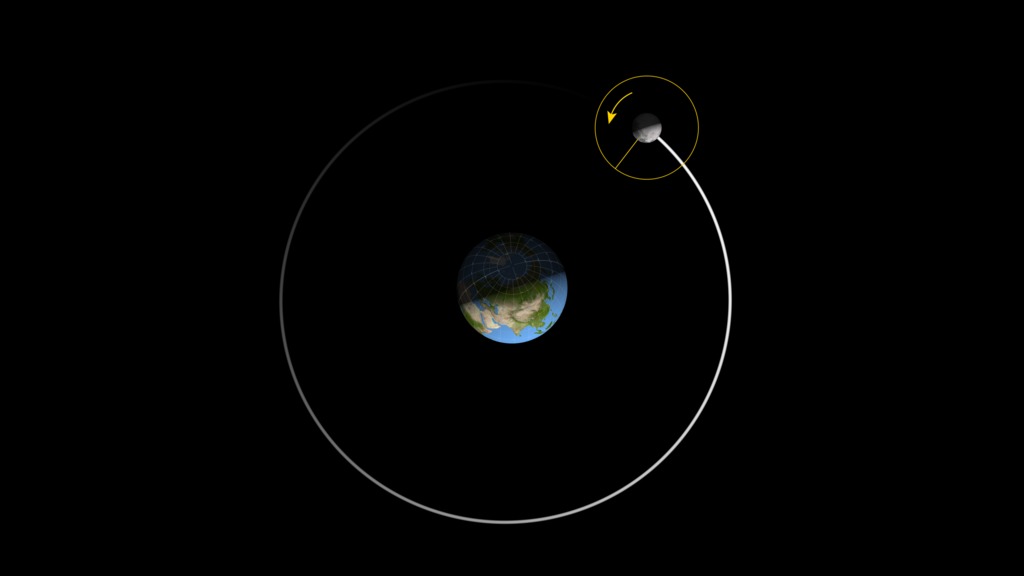100 Lunar Days - Parts I and II
In October 2017, The Lunar Reconnaissance Orbiter celebrates 100 lunar days of being at the Moon. Part 1 of this video series helps explain what a "lunar day" is, and what it means for the spacecraft's mission to have been at the Moon for this period of time.
Watch this video on the NASA Goddard YouTube channel.
Music provided by Killer Tracks: "Time is Running" - Dirk Ehlert, Guillermo De La Barreda; "Buckaroo Instrumental" - Alan Gold & Fiona Hamilton.
In October of 2017, Lunar Reconnaissance Orbiter (LRO) celebrates one hundred days of collecting scientific data at the Moon. One hundred Moon days. That's 100 opportunities to observe changes from night to day, photograph the surface at different Sun angles, measure rising and falling temperatures, and study the way certain chemicals react to the daily light and temperature cycle, among other things. But you might be wondering...
What is a lunar day?
What do we mean when we say that LRO has been at the Moon for 100 lunar days? The short answer is this: A day is the length of time between two noons or sunsets. That's 24 hours on Earth, 708.7 hours (29.53 Earth days) on the Moon. We can see a day passing on the Moon by watching its month-long cycle of phases, and as of October 16, 2017, LRO has watched this cycle 100 times since the start of its exploration and science mission on September 15, 2009.But as often happens in astronomy, the situation's actually a little more complicated. The trouble starts with merely nailing down a definition of the word
day.
At any given location on the Earth, a local solar day is the time it takes the Sun to return to the same point in the sky. To be more precise, we define a line in the sky, the meridian, which runs between due north and due south and passes through the zenith (the straight-up point). Local noon is the time when the Sun is centered on the meridian, and a local solar day is the time between two successive local noons.
The length of this kind of day varies throughout the year. Currently, it can be as much as 21 seconds shorter or 29 seconds longer than 24 hours. This variation is due to the eccentricity of the Earth's orbit (the orbit is an ellipse, not a circle), and the obliquity of the ecliptic (the Earth's axis is tilted relative to its orbit).
So that we don't have to reset our clocks all the time, it's convenient to define a mean solar day, the average of the local solar day over a full year. A mean solar day is exactly 24 hours long. In fact, we define an hour as 1/24 of a mean solar day.
The mean solar day can't be the average over any arbitrary year. The eccentricity and obliquity vary over time, and because of precession of the equinoxes, the effect of obliquity slides through the calendar, alternately reinforcing and canceling the effect of eccentricity over tens of thousands of years. The Earth is also slowing down, primarily due to tidal interactions with the Moon.
The mean solar day is the theoretical average local solar day, calculated by fixing the eccentricity, obliquity, precession, and rotation rate to the values at noon in Greenwich, England, on December 31, 1899, using the theory of the Sun's apparent motion developed by Simon Newcomb in the 1890's.
We now have extremely accurate atomic clocks. We define the length of a second as a certain number of waves in the radiation from a cesium atom, and we say that a mean solar day is 86400 of these seconds. For historical continuity, the number of waves was chosen so that this second is 1/86400 of the mean solar day defined by Newcomb's theory.
The concept of a solar day can be extended to other bodies in the solar system, including our Moon. A mean solar day on the Moon, a lunar day for short, is 29.5306 Earth days. Local lunar days can vary even more than solar days on Earth, over 6 hours shorter or 7 hours longer than the mean. The 100 lunar days celebrated by LRO in October of 2017 are mean lunar days.
Because the Moon is tidally locked to the Earth, it always shows the Earth the same face. This also means that it rotates at the same rate that it orbits. A lunar day takes exactly as long as one complete orbit relative to the Sun. A lunar day also corresponds to one complete cycle of the phases visible from Earth, so a lunar day is the same as a synodic month.
At this point, it shouldn't surprise you that there are other kinds of days (sidereal, for example) and months (anomalistic and draconic, to name two). But that's a story for another time.
In Part II of this 100 Lunar Days video series, we look at the significance of the Lunar Reconnaissance Orbiter being at the Moon for this period of time, and highlight some of the scientific accomplishments of the mission.
Watch this video on the NASA.gov Video YouTube channel.
Music provided by Killer Tracks: "Time is Running" - Dirk Ehlert, Guillermo De La Barreda; "Wanna Feel Like This Forever" - Amir Aly, Henrik Lars Wikstrom.
Credits
Please give credit for this item to:
NASA's Goddard Space Flight Center
-
Producer
- David Ladd (USRA)
-
Video editor
- David Ladd (USRA)
-
Animator
- David Ladd (USRA)
-
Scientist
- Noah Petro (NASA/GSFC)
-
Visualizer
- Ernie Wright (USRA)
Release date
This page was originally published on Friday, October 6, 2017.
This page was last updated on Wednesday, May 3, 2023 at 1:47 PM EDT.
